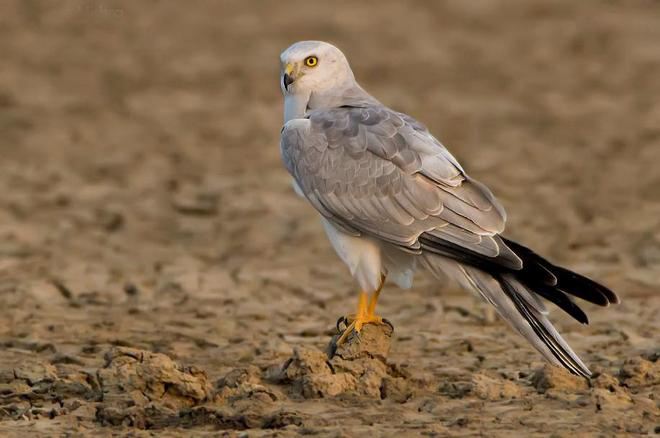Circus macrourus
IUCN
LCBasic Information
Scientific classification
- name:Circus macrourus
- Scientific Name:Circus macrourus,Pallid Harrier,Pale Harrier,Steppe Eagle, White-tailed Harrier, Marsh Harrier, Marsh Buzzard
- Outline:Raptor
- Family:Falconiformes Accipitridae H.subfamily H.genus
Vital signs
- length:43.5-52cm
- Weight:311-550g
- lifetime:8-16years
Feature
When showing off, I often make a "kiki-kiki-kik" sound
Distribution and Habitat
Origin: Afghanistan, Albania, Algeria, Angola, Armenia, Austria, Azerbaijan, Bahrain, Bangladesh, Belarus, Benin, Botswana, Bulgaria, Burkina Faso, Burundi, Cameroon, Central African Republic, Chad, China, Democratic Republic of the Congo, Côte d'Ivoire, Croatia, Cyprus, Czech Republic, Djibouti, Egypt, Eritrea, Ethiopia, Gambia, Georgia, Ghana, Greece, Guinea, Guinea-Bissau, Hungary, India, Islamic Republic of Iran, Iraq, Israel, Italy, Jordan, Kazakhstan, Kenya, Kuwait, Kyrgyzstan, Lebanon, Liberia, , Macedonia, Malawi, Maldives, Mali, Malta, Mauritania, Moldova, Mongolia, Montenegro, Mozambique, Myanmar, Namibia, Nepal, Niger, Nigeria, Oman, Pakistan, Palestine, Qatar, Romania, Russian Federation, Rwanda, Saudi Arabia, Senegal, Serbia, Sierra Leone, Slovakia, Slovenia, Somalia, South Africa, South Sudan, Sri Lanka, Sudan, Syrian Arab Republic, Tajikistan, United Republic of Tanzania, Togo, Tunisia, Turkey, Turkmenistan, Uganda, Ukraine, United Arab Emirates, Yemen, Zambia, and
Appearance
The male bird of the steppe harrier has white fore-eye, forehead, above-eye and face with a few black bristles. The upper body is gray. Except for very old birds, the top of the head, back and upper wing coverts are all decorated with brown. The upper tail coverts are black with white horizontal stripes. The central tail feathers are black with fuzzy traces of horizontal stripes. The next two pairs have gray edges and horizontal stripes, and are mixed with white spots. The rest of the tail feathers have gray and white horizontal stripes; the ear coverts are gray, the first primary flight feather is silver-gray, the tips of the 2nd to 6th are black, the outer vanes are gray, the inner vanes are black, and the 6th feathers gradually turn black, and then gradually turn gray again. All the inner vanes or the base of the inner vanes of the flight feathers have white markings. The chin, throat, and upper chest are gray, and the rest of the lower body is white. There is a small black wedge-sh
Details
The foreign name of the grassland harrier is Pallid Harrier, and there is no subspecies.

The steppe harrier often flies in the air, foraging mostly over open grasslands and meadows. It often flies slowly and low close to the ground, constantly watching the activities of prey on the ground, looking left and right with its head down. When it sees prey, it suddenly dives quickly, and through the control of its fan-shaped tail, wide open wings and forward-stretched feet, it can accurately and steadily land on the prey and capture it. Sometimes they stand on the ground waiting for food, and suddenly pounce on the prey after it appears. After catching the prey, they tear it apart on the ground and peck at it. They are not good at singing, but often make "kiki-kiki-kik" sounds when they are courting and showing off during the breeding season.
The grassland harrier mainly feeds on rodents such as voles, yellow mice, and jerboas, as well as hares, lizards, locusts, birds, chicks, and bird eggs.
The breeding season of the grassland harrier is from April to June, and it produces one nest per year. It nests on open plains or on mounds, and sometimes in grass and short bushes, mostly in sunken and dry places on the grassland. The nest is relatively simple, with an outer diameter of 50 cm and an inner diameter of 15-20 cm. Each nest has 3-5 eggs, which are white or light blue with reddish or brown spots. The size of the eggs is 40.1-50 mm × 32.6-37 mm. If an egg is lost, a compensatory nest is usually laid. The female bird begins to incubate the eggs after the first egg is laid, and the incubation period is 30 days. The chicks are late-maturing. The male bird feeds the chicks on the first day after hatching, and the female bird warms the chicks in the nest. Later, the female bird also participates in the chick-raising activities. Under the joint feeding of the male and female parents, after a brooding period of 35-45 days, the chicks can leave the nest. The female bird molts while incubating the eggs, while the male bird molts when the chicks begin to fly.
The grassland desertification is very serious, posing a serious threat to the living environment of the steppe harrier. The global population is estimated to be 9,000-15,000 pairs, and the population is on a downward trend. Throughout its breeding range, the prairie harrier is primarily threatened by grassland destruction and degradation through conversion to cropland, vegetation burning, intensive grazing in wetland pastures, and clearing of shrubs and tall weeds (Galushin 2003, E. Bragin 2007). Fires are started by farmers, arsonists, and drought thunderstorms (E. Bragin 2007). In its wintering grounds, the species is thought to be negatively affected by grassland loss from grassland burning, mowing, and overgrazing (Galushin 2003), as well as the use of harmful pesticides, rodenticides, and other toxic chemicals (R. Simmons in litt. 1999, Galushin et al. 2003), although further research is needed.
Listed in the IUCN Red List of Threatened Species (IUCN) 2018 ver 3.1 - Near Threatened (NT).
Listed in the CITES Appendix II of the Washington Convention.
Listed in the second level of China's National List of Key Protected Wildlife (February 5, 2021).
Protect wildlife and eliminate game.
Maintaining ecological balance is everyone's responsibility!








